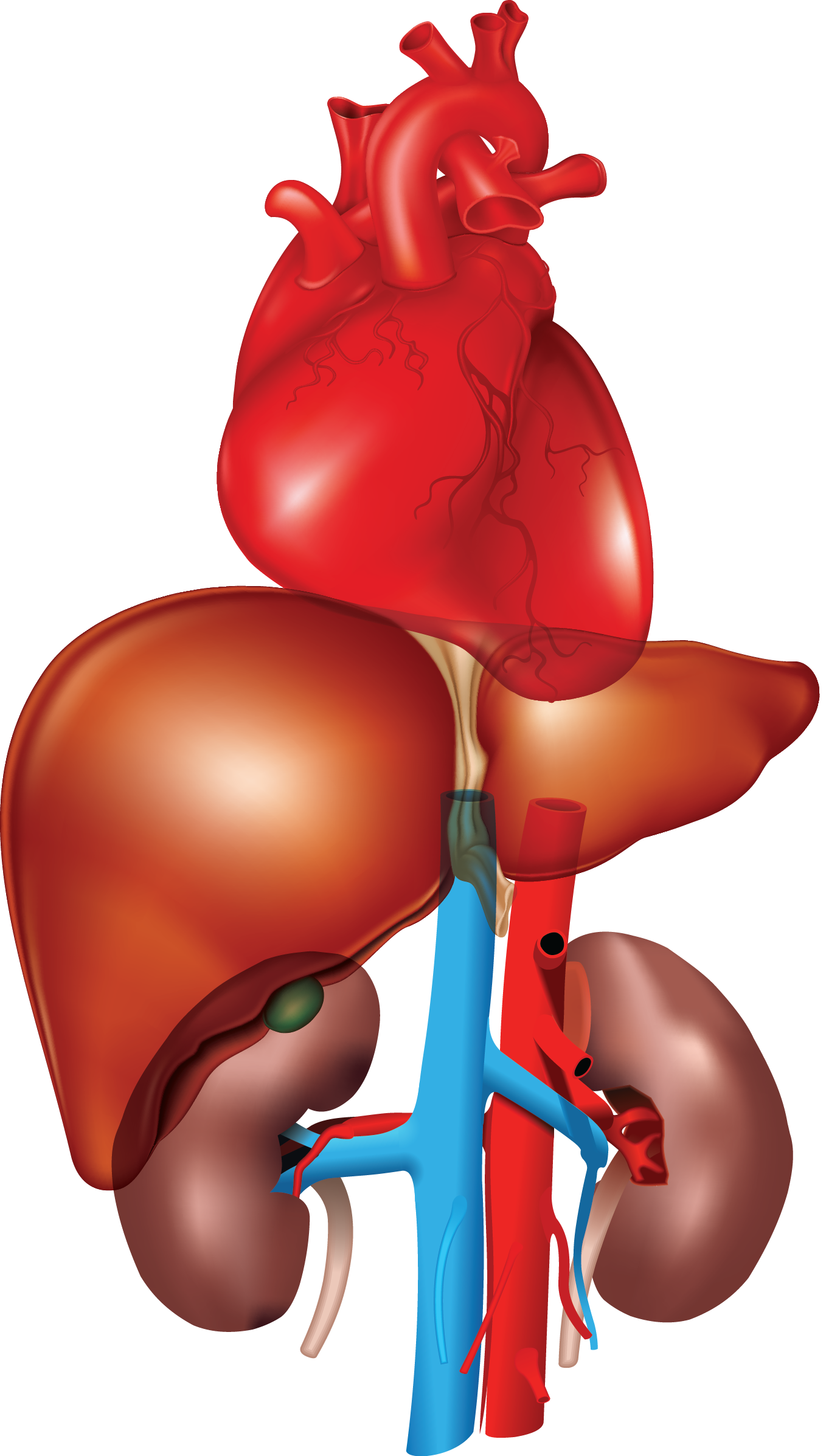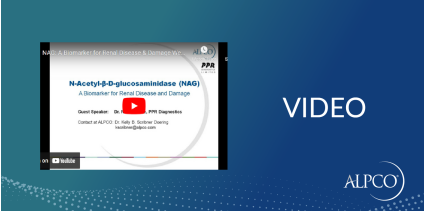Drug-Induced Organ Injury
Toxicological side effects are a common obstacle in drug development pipelines and often manifest in site-specific damage to vital organs, including the liver, kidney and heart.

Estimates of compound attrition from failure to meet safety endpoints are as high as 45% in preclinical models and 40% for Phase I clinical trials.
1
Now more than ever, labs engaged in compound, drug and device screening and development are chartered with performing a comprehensive survey of potential toxicological side effects as part of their routine practice. ALPCO offers a wide range of preclinical species-specific assays that provide a means for scientists to achieve their goals in this endeavor.
Cardiotoxicity
Cardiotoxicity can occur due to exposure to heavy metals, recreational drugs or pharmaceutical compounds. It is a common side effect of chemotherapeutic agents, such as those in the Anthracycline class.
2 Even the newer biologic anticancer therapeutics, such as Trastuzumab, carry high risks.
3 Cardiotoxicity may be as mild as electrocardiographic changes or arrhythmias, but can progress to myocardial infarction and even cardiomyopathy. Biomarkers of cardiomyocyte injury, like
Troponin I,
ANP,
BNP and
CK-MB, may be helpful for identification of risks associated with these agents.
4
Hepatotoxicity
Drug-induced liver injury (DILI) can be hepatocellular or choleostatic in nature, but because viral hepatitis, environmental toxins, or other diseases present the same pathogenic findings as DILI, even biopsy is not conclusive.
5 Assessment of DILI has primarily relied on the release of enzymes from necrotic cells, functional indicators of hepatic activity or increases in circulating bilirubin.
6 Drug-induced liver injury has become the single most common cause for removal of an approved drug from market
7, so there continues to be a need for more specific and sensitive markers of hepatocellular damage. One such biomarker, α-GST, has been shown to outperform transaminases as a safety marker in rat models, and may offer the potential to more accurately assess compound toxicity by supplementing current screening methods.
8
Nephrotoxicity
Until fairly recently, drug-induced acute kidney injury (DIAKI) has been determined by measurement of serum creatinine and blood urea nitrogen, both of which become elevated after damage has occurred. The advent of novel markers, such as
NGAL and
π-GST, are allowing researchers to detect DIAKI earlier and identify the site-specific injury.
9,10 The work by the Critical Path Institute’s Predictive Safety Testing Consortium has identified and proposed seven new nonclinical biomarkers,
KIM-1,
Albumin,
Total Protein,
β2-microglobulin,
Cystatin C, Clusterin and
Trefoil Factor-3, for consideration by the FDA, EMA and PDMA in the drug review process.
11
Environmental Toxicology
The field of Environmental Toxicology investigates the impact of pollutants and exposures to man-made chemicals on living organisms. Primary organs of interest include kidney, lung, heart, liver, thyroid and reproductive organs.
N-Acetyl-ß-D-glucosaminidase (NAG): A Biomarker for Renal Disease and Damage Webinar
https://www.youtube.com/watch?v=kFflvMiw9m4
Note: If slides do not advance at minute 1:25 please use the slider at the bottom of the screen to advance to the following slide. Alternatively, a pdf version of the webinar slides can be downloaded here. We apologize for any inconvenience.
NAG Assay Training Video
https://www.youtube.com/watch?v=p66_Gv60My4
References
1. Suter L, Babiss LE, and Wheeldon EB. (2004) Toxicogenomics in predictive toxicology in drug development. Chem Biol. 11:161-171.
2. Ewer MS and Ewer SM. (2010) Cardiotoxicity of anticancer treatments: what the cardiologist needs to know. Nat Rev Cardiol. 7:564-575.
3. Cardinale D, et al. Trastuzumab-Induced Cardiotoxicity: Clinical and Prognostic Implications of Troponin I Evaluation. J Clin Oncol. 25(28):3910-3916.
4. Gharib MI and Burnett AK. (2002) Chemotherapy-induced cardiotoxicity: current practice and prospects of prophylaxis. Eur J Heart Fail. 4(3):235-242.
5. U.S. Department of Health and Human Services. Food and Drug Administration. Center for Drug Evaluation and Research. Guidance for Industry, Drug-Induced Liver Injury: Premarketing Clinical Evaluation. Washington: Office of Communications, Division of Drug Information, July 2009.
6. Lee WM and Senior JR. (2005) Recognizing drug-induced liver injury: current problems, possible solutions. Toxicol Pathol. 33(1):155-64.
7. Temple RJ and Himmel MH (2002) Safety of newly approved drugs: implications for prescribing. [editorial] JAMA 287:2273–5.
8. Clarke H, et al. (1997) Alpha-glutathione s-transferase (alpha-GST) release, an early indicator of carbon tetrachloride hepatotoxicity in the rat. Hum Exp Toxicol. 16:154-157.
9. Mishra J, Ma Q, Prada A, et al. (2003) Identification of neutrophil gelatinase-associated lipocalin as a novel urinary biomarker for ischemic injury. J Am Soc Nephrol. 4:2534–2543.
10. Koyner JL, et al. Urinary Biomarkers in the Clinical Prognosis and Early Detection of Acute Kidney Injury. Clin J Am Soc Nephrol. 5(12):2154-65
11. Dieterle F, et al. (2010) Renal biomarker qualification submission: a dialog between the FDA-EMEA and Predictive Safety Testing Consortium. Nat Biotechnol. 28(5):455-62.
 Estimates of compound attrition from failure to meet safety endpoints are as high as 45% in preclinical models and 40% for Phase I clinical trials.1
Now more than ever, labs engaged in compound, drug and device screening and development are chartered with performing a comprehensive survey of potential toxicological side effects as part of their routine practice. ALPCO offers a wide range of preclinical species-specific assays that provide a means for scientists to achieve their goals in this endeavor.
Estimates of compound attrition from failure to meet safety endpoints are as high as 45% in preclinical models and 40% for Phase I clinical trials.1
Now more than ever, labs engaged in compound, drug and device screening and development are chartered with performing a comprehensive survey of potential toxicological side effects as part of their routine practice. ALPCO offers a wide range of preclinical species-specific assays that provide a means for scientists to achieve their goals in this endeavor.

